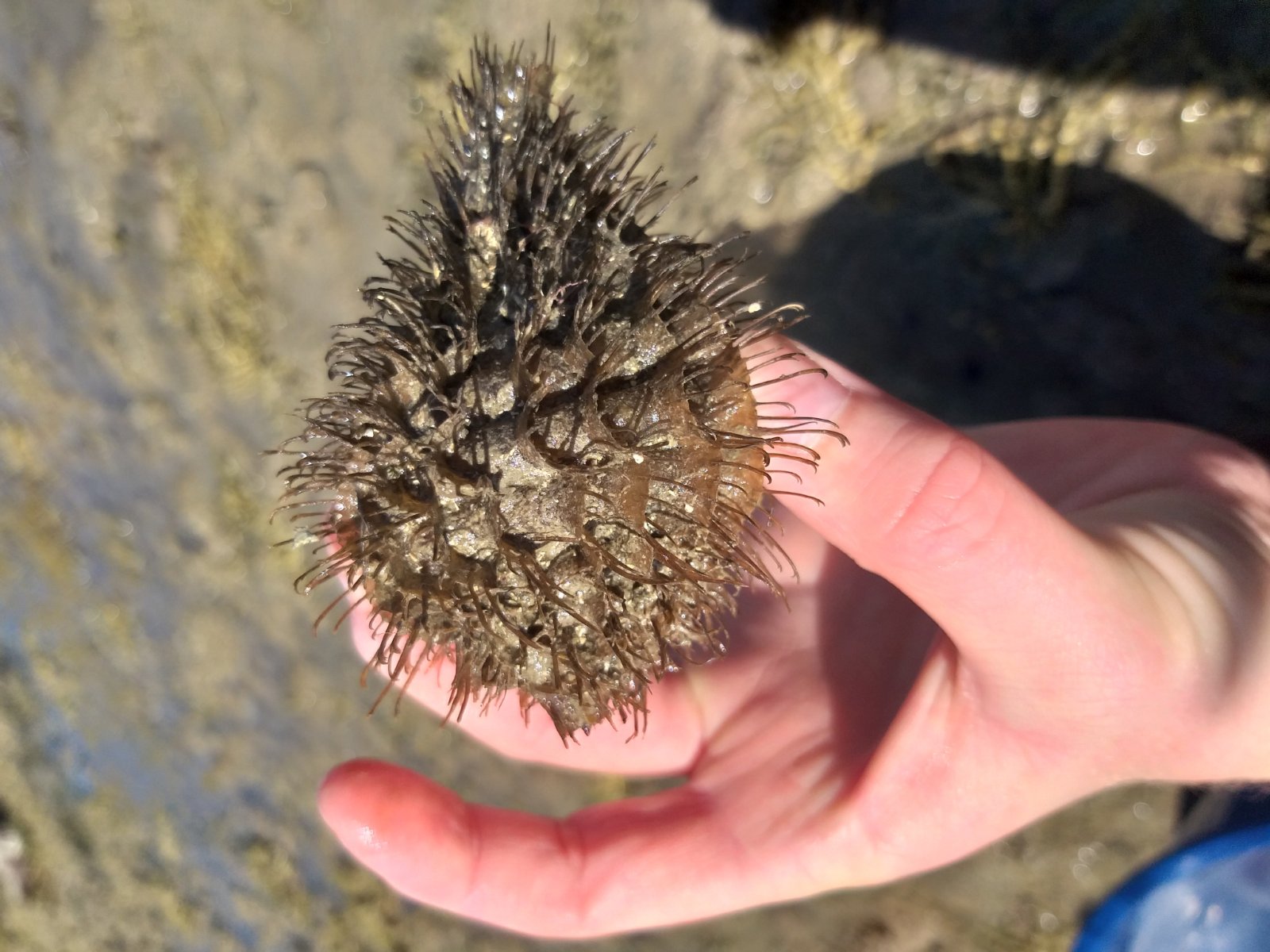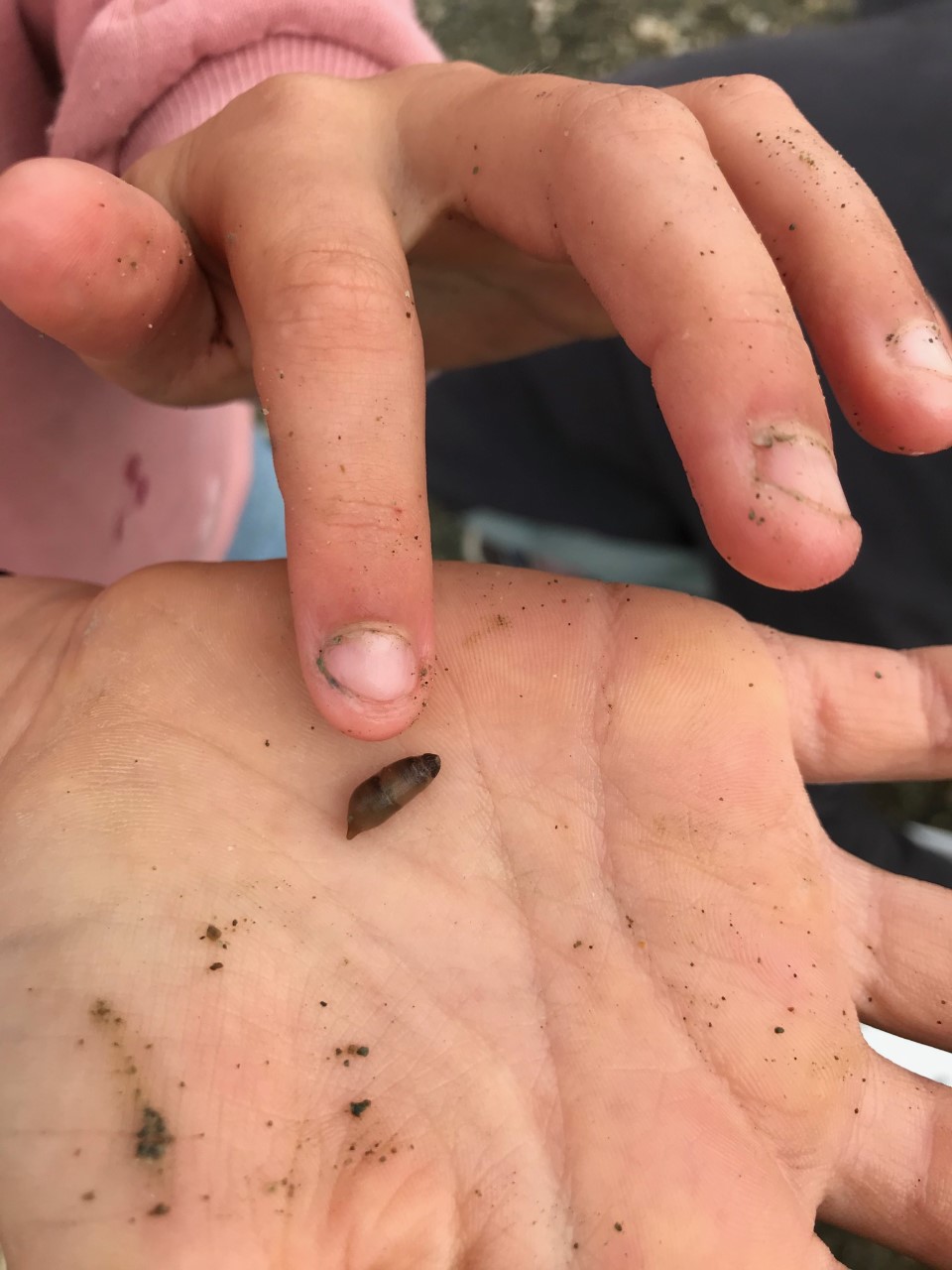
As part of the Hauraki Gulf Monitoring Project, Wentworth College visited Polkinghornes Bay in April to survey the shore and find out what is living there. The students discovered a lot of species common to New Zealand’s northern rocky shore like black nerita snails, common shore and half crabs, and a couple of species of sea star. Unexpectedly they found a hairy trumpet snail (Monoplex parthenopeus). This is an uncommon intertidal species that can live as deep as 50 metres. Not much is known about this species but given the shape of the shell it is a predatory snail. They also discovered jellyfish-like egg deposits, likely from a mollusc but species unknown scattered all over the survey site.

Waiheke Primary school has been surveying Whakanewha beach as part of the Hauraki Gulf Monitoring project since 2018. For the past 3 years, this sandy site has been home to species of snails and shellfish. A special find this time when they were surveying in May this year was a burrowing anemone. These anemones anchors inside sand or mud and feeds on the debris on the surface of the sediment. Unlike the more usual anemone species which anchor on a rock or hard surface, filtering food out of the water.
These fascinating finds show how useful the Marine Metre² method is – as it can reveal the presence of species previously unseen by the surveyors. Both Wentworth College and Waiheke Primary School have learnt how even on your local shore that you know well unexpected and new creatures can be found.